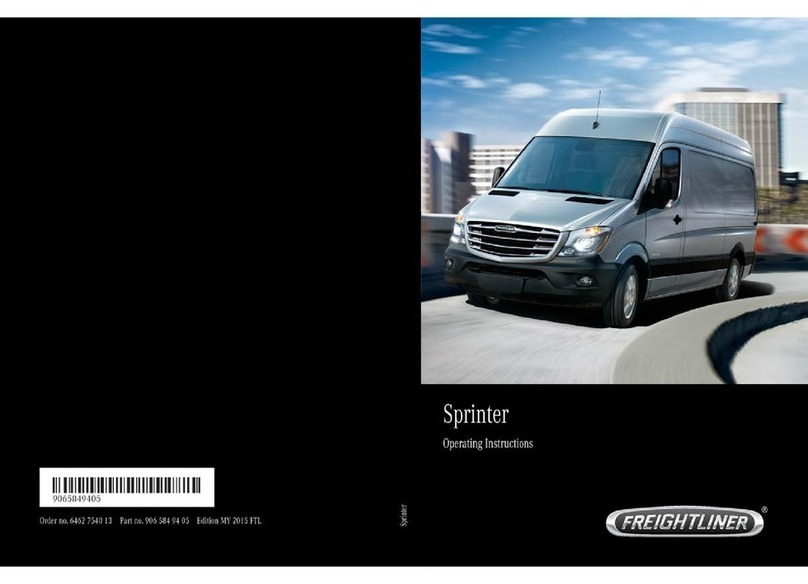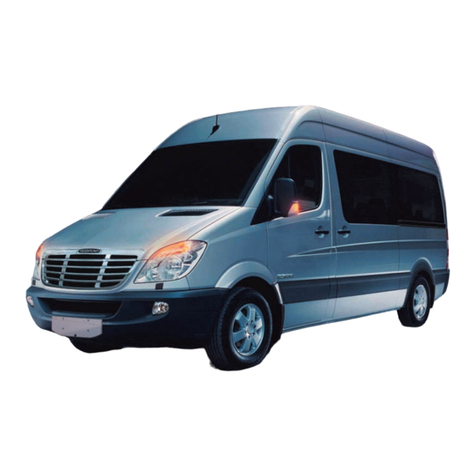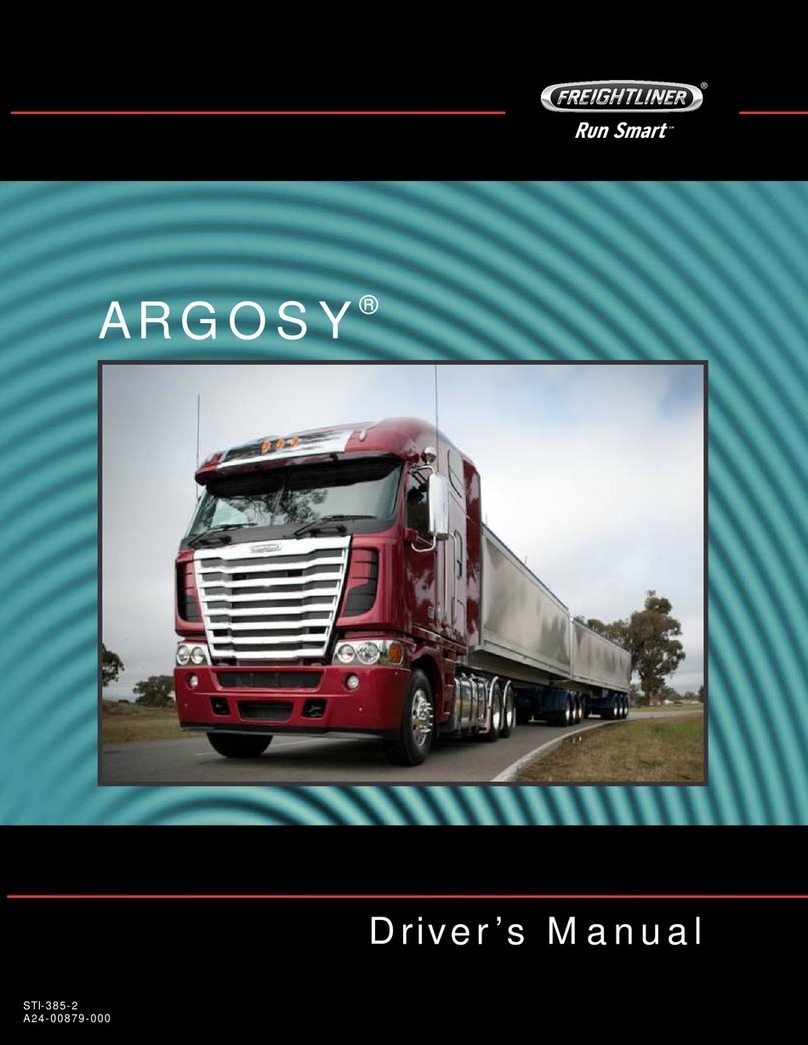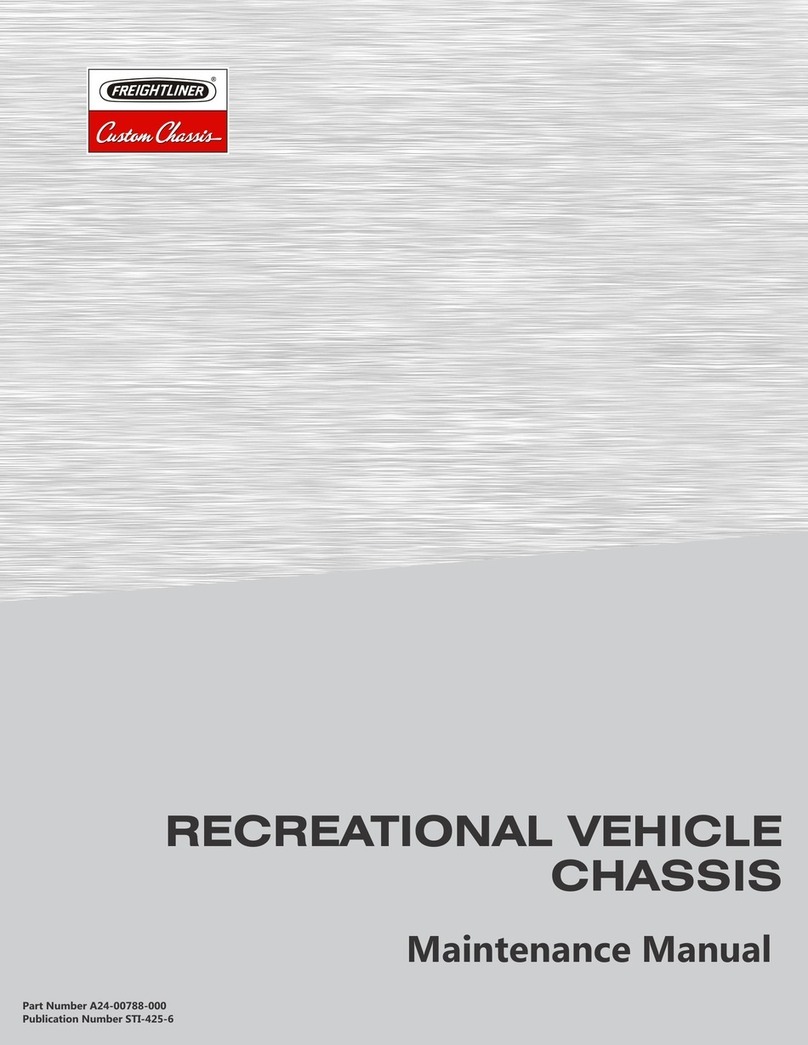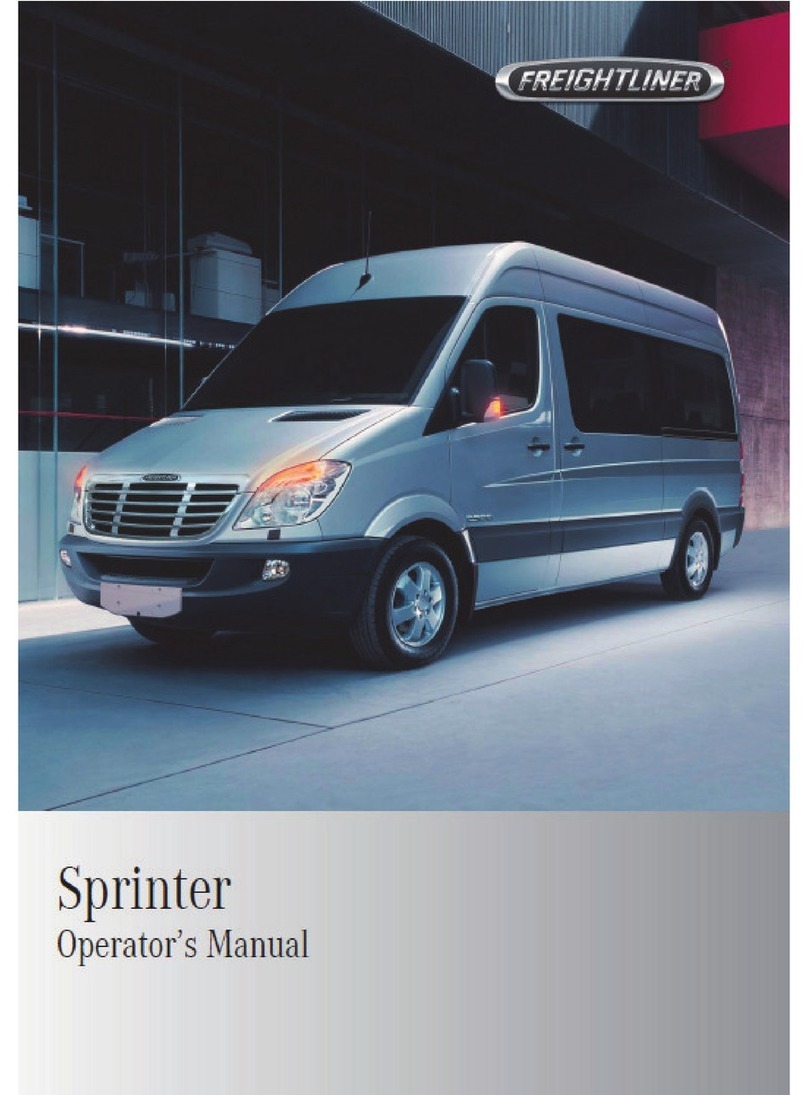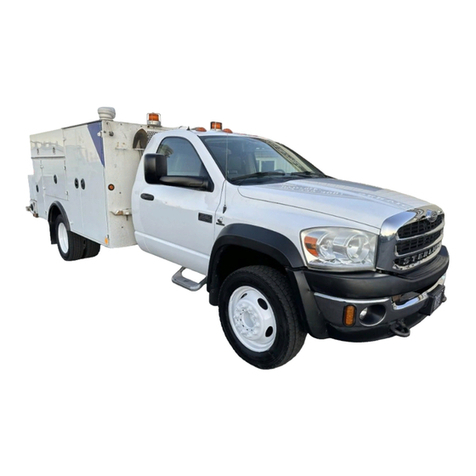Introduction
This manual provides information needed to operate
and understand the chassis and its components.
More detailed information is contained in the Owner’s
Warranty Information for North America booklet, and
in the vehicle’s workshop and maintenance manuals.
Freightliner chassis are equipped with various chas-
sis and cab components. Not all of the information
contained in this manual applies to every chassis. If
parts on your chassis differ from those shown, they
may have been installed by the body builder.
The safety or performance of your vehicle could be
adversely affected by the installation of nonstandard
components. Note the limitations and specifications
provided in the vehicle and chassis manuals, and
consult your selling dealer before making any altera-
tions to the vehicle or chassis.
For your reference, keep this manual in the vehicle
at all times.
IMPORTANT: Descriptions and specifications in
this manual were in effect at the time of printing.
Freightliner Custom Chassis Corporation re-
serves the right to discontinue models and to
change specifications or design at any time
without notice and without incurring obligation.
Descriptions and specifications contained in this
publication provide no warranty, expressed or
implied, and are subject to revisions and edi-
tions without notice.
Environmental Concerns and
Recommendations
Whenever you see instructions in this manual to dis-
card materials, you should first attempt to reclaim
and recycle them. To preserve our environment, fol-
low appropriate environmental rules and regulations
when disposing of materials.
Event Data Recorder
This vehicle is equipped with one or more devices
that record specific vehicle data. The type and
amount of data recorded varies depending on how
the vehicle is equipped (such as the brand of engine,
if an air bag is installed, or if the vehicle features a
collision avoidance system, etc.).
This vehicle is equipped with an event data recorder
(EDR). The main purpose of an EDR is to record
data in certain crash or near-crash situations, such
as air bag deployment or hitting a road obstacle, that
will assist in understanding how a vehicle’s systems
performed. The EDR is designed to record data re-
lated to vehicle dynamics and safety systems for ap-
proximately 60 seconds. This data can help provide
a better understanding of the circumstances in which
crashes and injuries occur. Data recorded includes
the following items:
•how various systems in the vehicle were oper-
ating
•engine system information
•how far (if at all) the driver was depressing the
accelerator
•if the driver was depressing the brake pedal
•how fast the vehicle was traveling
NOTE: Data is not recorded by the EDR under
normal driving conditions. Personal data such
as name, gender, age, and crash location are
not recorded. However, other parties such as
law enforcement could combine the EDR data
with the type of personally identifying data rou-
tinely acquired during a crash investigation.
To read data recorded by an EDR, special equipment
is required, and access to the vehicle or the EDR is
needed. In addition to the vehicle manufacturer, other
parties that have the special equipment, such as law
enforcement, can read the information if they have
access to the vehicle or the EDR.
Emissions and Fuel Efficiency
Compliance
This vehicle must be regularly inspected and main-
tained as indicated in the Walk-In Van Chassis Main-
tenance Manual, and in the Pre- and Post-Trip In-
spections and Maintenance chapter in this manual, in
order to continue satisfactory performance and en-
sure coverage of the vehicle under the manufactur-
er’s warranty. Many maintenance procedures ensure
that the vehicle and engine continue to comply with
applicable emissions standards. Maintenance proce-
dures, using components engineered to comply with
greenhouse gas emissions and fuel efficiency regula-
tions, may be performed by an authorized Daimler
Foreword
STI-471-6 (11/15)
A24-01451-000
Printed in U.S.A.
